Ampney St Mary, Gloucestershire (Gloucester) Late C.14
The Warning to Sabbath Breakers
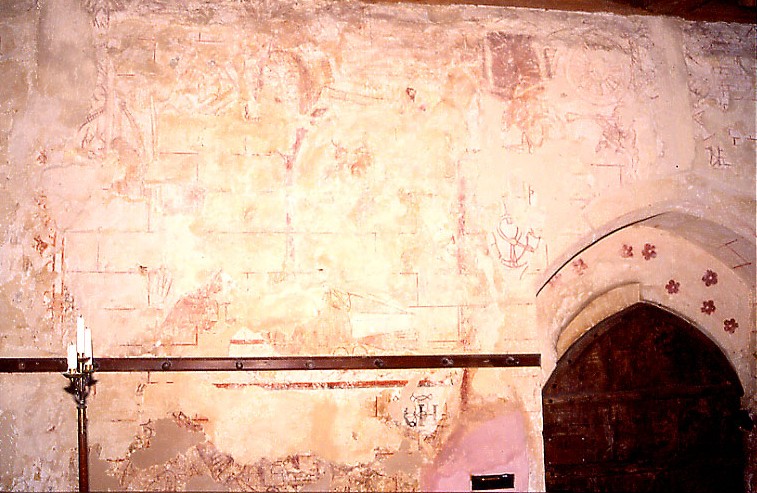
Although it is now incomplete and very badly faded, there are details in this Warning to Sabbath Breakers that appear in no other extant example of the subject. In particular, not all the activities referred to here come under the heading of work; some are pastimes or what would now be called leisure activities. The scene is on the south wall of the nave, and the various elements in it are clearer in the detailed photographs following.
Below, just right of centre, the head of Christ, without a halo, but with eyes open, drops of blood on the forehead and various implements surrounding it, shows fairly well. A wool-comb, with broad teeth, is on the right, along with a knife projecting to the right just below it.
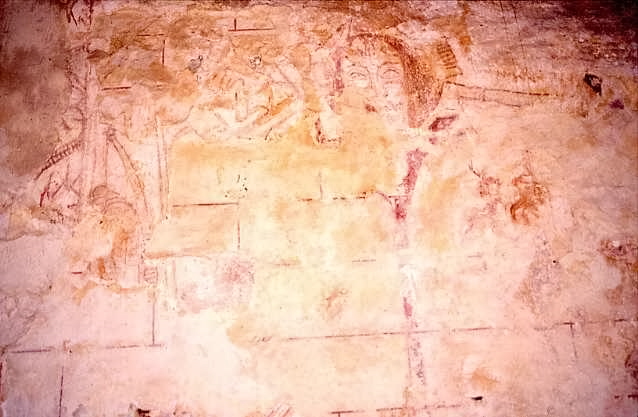
Other objects on the opposite side have tended to merge with the illusionistic painted brickwork of the background, but at the left of the scene is an archer with a longbow, not shooting, but holding his bow and looking in a speculative manner towards the centre of the painting.
The photograph below shows the lower part of the painting, with part of Christ’s right foot visible at the centre left. Part of a pair of recognisable pincers is very clear in the centre, and beyond it to the right is a hacksaw.
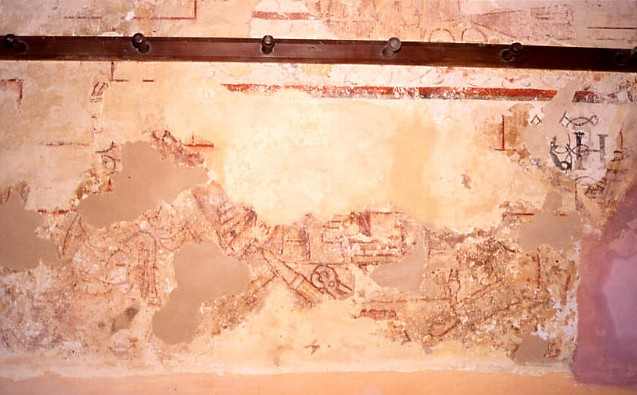
To the left beside Christ’s foot is something like an axe with a curved, half-moon shaped blade, and a little further to the left, discernible to a patient eye, a man playing bagpipes, two drone pipes dangling. Above the wooden rail in this lower part are other implements, the most recognisable (lower left, below) being a ball of cord or wool, alluding presumably to spinning or weaving.
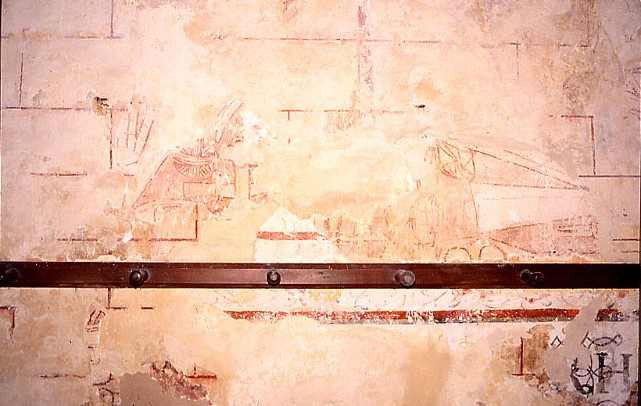
The painting extends to the west, above the south door, and there are more implements here, including at the left of the final photograph below the griddle or harrow-like object that appears in nearly all examples of this subject. Beyond this to the right is a hammer, and then a wheel, with another hammer, clawed this time, beyond to the right. Below the wheel is the most curious detail of all, a man who seems at first glance to be holding a telescope-like object to his eye. Tristram identified this as a ‘singing’ or whistling arrow, with a blunt perforated wooden head which made a humming noise when launched into the air.¹ A display involving these was evidently laid on for Henry VIII and Queen Catherine of Aragon on Mayday at Shooter’s Hill in London, when:
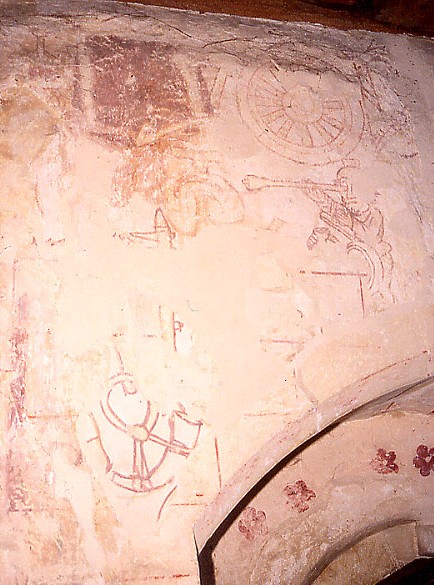
‘[An archer in the guise of] Robin Hoode whistled, and all the two hundred archers shot off, loosing all at once; and when he whistled again they likewise shot again; their arrows whistled by craft of the head, so that the noise was strange and loud, which greatly delighted the king, queen, and their company.’²
Finally at the left is a large, elaborately curved hunting-horn, made to hang from a saddle, and confirming again that it is not only staying away from church in order to work, but in order to play as well, that is frowned on. The extent to which paintings of this subject were part of an apparatus of social control has to be judged against the evidence, in this example at least, that royal and aristocratic pastimes, such as hunting, are just as firmly proscribed as more lowly ones.
¹ Tristram III, p.134
² Stow, John, Survey of London, 1598, p. 90 (Everyman edition, 1923)
† in page heading = Diocese